I am currently using box2d physics engine in java in libgx, and i am facing problems with collisions. The problem is that the body stops moving, and a collision point appears while on a flat area. The way im working is i am making multiple bodies, each representing a block, and those blocks are side-by-side. Look at the collision point here:
the body should not collide here for the Y coordinate of the bodies is equal, and their side is equal as well.
float PPM = 100;
float side = 45;
for (float i = start; i < end; i++) {
/**
* perlin noise for terrain
*/
def.type = BodyDef.BodyType.StaticBody;
float place = Maths.map(noise.noise(off, off), 0, 1, -10, 50);
if (place < 10) {
place = 0;
} else if (place < 20) {
place = side;
} else if (place < 30) {
place = side * 2;
} else if (place < 40) {
place = side * 3;
} else if (place <= 50) {
place = side * 4;
}
place += side / 2;
float posx = (i * side);
float posy = place;
float size = side / 2f;
def.position.set(posx / PPM, posy / PPM);
b = world.createBody(def);
shape.setAsBox(size / PPM, size / PPM);
fdef.shape = shape;
fdef.isSensor = false;
b.createFixture(fdef);
off += 0.01;
toSetLast = posx + side;
GrassBlock grass = new GrassBlock(b, new
Vector2(b.getPosition().x * PPM, b.getPosition().y * PPM));
//dirt under grass
for (float j = (place / side) - 1; j >= -1; j--) {
posy = j * side;
def.position.set(posx / PPM, posy / PPM);
b = world.createBody(def);
shape.setAsBox(size / PPM, size / PPM);
fdef.isSensor = false;
fdef.shape = shape;
b.createFixture(fdef);
DirtBlock dirt = new DirtBlock(b, new
Vector2(b.getPosition().x * PPM, b.getPosition().y * PPM));
addBlock(dirt.getLocation(), dirt);
}
addBlock(grass.getLocation(), grass);
}

